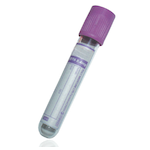Suitable Specimen Types
- Serum
- EDTA Plasma
- Li Hep Plasma
Specimen Transport
First class postSample Processing in Laboratory
Place sample in toxicology rack.Sample Preparation
None requiredTurnaround Time
3 days.Sample Stability
Keep refrigerated. 4 degrees.Codeine
General Information
Codeine is a narcotic analgesic occurring naturally in opium from which it was first isolated in 1832. It is produced commercially by the 3-O-methylation of morphine. It is considered to be 1/10 to 1/6 as potent an analgesic as morphine in man on a weight basis, but is quite effective as an antitussive. Single adult normal release doses of 15-60 mg are given orally or by subcutaneous injection, and the total daily dose may range from 60-240 mg. Codeine is found in numerous proprietary preparations in combination with non-narcotic analgesics, antihistamines and other drugs.
Codeine is biotransformed in man via O-demethylation to morphine and via N-demthylation to norcodeine. All 3 compounds are excreted in the urine as both free drugs and as glucoronide conjugates.
The adverse effects of codeine therapy include nausea, vomiting, sedation, dizziness, orthostatic hypotension, urinary retention, constipation, rash and respiratory depression.
Please note, this assay is for the quantitative determination of codeine in blood. Codeine use may also be detected via our urinary Drugs of Abuse Screen by LC-MS/MS.
Patient Preparation
No patient preperation required.
Notes
Codeine measured by LC-MS/MS
Reference Range
Please contact the laboratory if codeine measurement is required for therapeutic monitoring purposes.
Units ug/L
Specifications
- EQA Scheme?: Yes
- EQA Status: LGC QUARTZ, LGC CLIN TOX
